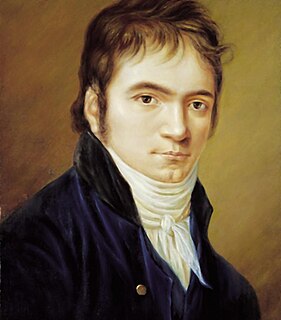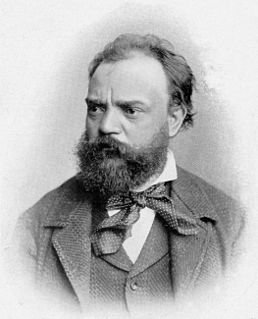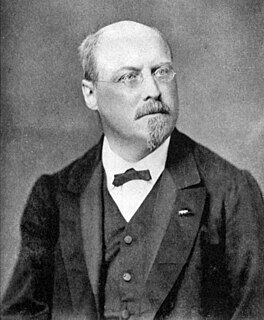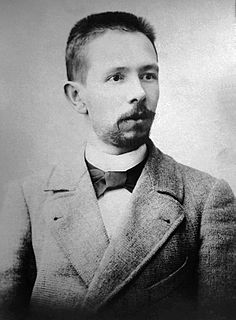External links
- Detailed description at raff.org
- Symphony No. 2 (Raff) : Scores at the International Music Score Library Project (Symphony page on imslp.org)
- Raff Orchestral Works Vol 1 / by Jarvi Neeme recording and review, readings.com.au
Symphony No. 2 in C major, Op. 140, was composed by Joachim Raff in Weimar in 1866. It is one of the three Raff symphonies that does not carry a descriptive title. It is dedicated to Ernest II, Duke of Saxe-Coburg and Gotha. It was premiered in Weimar in 1867 and was published two years later in Mainz. A few years later the symphony received its second performance in the Leipzig Gewandhaus under Raff's baton. A typical performance lasts for about 37 minutes.
The symphony is scored for piccolo, 2 flutes, 2 oboes, 2 clarinets in B-flat, 2 bassoons, 4 horns in F, 2 trumpets in F, trombone, bass trombone, timpani and strings.
The symphony is structured in four movements:

The Symphony No. 1 in E minor, Op. 39, by Jean Sibelius is a symphony started in 1898, and finished in early 1899, when Sibelius was 33. The work was first performed on 26 April 1899 by the Helsinki Orchestral Society, conducted by the composer, in an original version which has not survived. After the premiere, Sibelius made some revisions, resulting in the version performed today. The revised version was completed in the spring and summer of 1900, and was first performed in Berlin by the Helsinki Philharmonic, conducted by Robert Kajanus on 1 July 1900.

The Symphony No. 6 in B minor, Op. 74, also known as the Pathétique Symphony, is Pyotr Ilyich Tchaikovsky's final completed symphony, written between February and the end of August 1893. The composer entitled the work "The Passionate Symphony", employing a Russian word, Патетическая (Pateticheskaya), meaning "passionate" or "emotional", which was then (mis-)translated into French as pathétique, meaning "solemn" or "emotive".

Ludwig van Beethoven's Symphony No. 1 in C major, Op. 21, was dedicated to Baron Gottfried van Swieten, an early patron of the composer. The piece was published in 1801 by Hoffmeister & Kühnel of Leipzig. It is not known exactly when Beethoven finished writing this work, but sketches of the finale were found to be from 1795.

Sergei Prokofiev wrote his Symphony No. 3 in C minor, Op. 44, in 1928.

The Symphony No. 9 in C major, D 944, known as the Great, is the final symphony completed by Franz Schubert. Originally called The Great C major to distinguish it from his Symphony No. 6, the Little C major, the subtitle is now usually taken as a reference to the symphony's majesty. Unusually long for a symphony of its time, a typical performance of The Great lasts an hour when all repeats indicated in the score are taken. The symphony was not professionally performed until a decade after Schubert's death.

The Symphony No. 5 in D major/D minor, Op. 107, known as the Reformation, was composed by Felix Mendelssohn in 1830 in honor of the 300th anniversary of the Presentation of the Augsburg Confession. The Confession is a key document of Lutheranism and its Presentation to Emperor Charles V in June 1530 was a momentous event of the Protestant Reformation. This symphony was written for a full orchestra and was Mendelssohn's second extended symphony. It was not published until 1868, 21 years after the composer's death – hence its numbering as '5'. Although the symphony is not very frequently performed, it is better known today than when it was originally published. Mendelssohn's sister, Fanny Mendelssohn Hensel, chose the name Reformation Symphony.

Symphony No. 3 in F major, Op. 90, is a symphony by Johannes Brahms. The work was written in the summer of 1883 at Wiesbaden, nearly six years after he completed his Symphony No. 2. In the interim Brahms had written some of his greatest works, including the Violin Concerto, two overtures, and Piano Concerto No. 2.
Aram Khachaturian's Piano Concerto in D-flat major, Op. 38, was composed in 1936. It was his first work to bring him recognition in the West, and it immediately entered the repertoire of many notable pianists.
Symphony No. 1 in G minor, Op. 7, FS 16 is the first symphony of Danish composer Carl Nielsen. Written between 1891 and 1892, it was dedicated to his wife, Anne Marie Carl-Nielsen. The work's première, on 14 March 1894, was performed by Johan Svendsen conducting the Chapel Royal Orchestra, with Nielsen himself among the second violins. It is one of two symphonies by Nielsen without a subtitle.

The Symphony No. 5 in F major, Op. 76, B. 54, is a classical composition by Antonín Dvořák. It was originally published as Symphony No. 3.

Franz Liszt composed his Prometheus in 1850, numbering it No. 5 in his cycle of symphonic poems when he revised it in 1855. The work is based on the Greek myth detailing the Titan Prometheus' theft of fire from the gods and is numbered S.99 in the Searle catalogue.
The Symphony No. 1 Elevamini is an orchestral work by Australian-born composer Malcolm Williamson.

The Missa longa in C major, K. 262/246a, is a mass composed by Wolfgang Amadeus Mozart in May 1776. Other sources claim it was composed in May 1775. It is scored for SATB soloists, SATB choir, violin I and II, 2 oboes, 2 horns, 2 clarini, 3 trombones colla parte, timpani and basso continuo.

Symphony No. 1 in D major, An das Vaterland, Op. 96, was composed by Joachim Raff between 1859 and 1861.
Symphony No. 3 in F major, Im Walde, was composed by Joachim Raff in Wiesbaden in 1869 and was premiered in 1870 in Weimar. Along with his Fifth Symphony, it was one of his most successful and frequently performed works during his lifetime and it earned him a reputation as a symphonist. An American critic named it "the best symphony of modern times" while Hans von Bülow described the symphony's success as "colossal". It was published in 1871 by Kistner of Leipzig. A typical performance lasts for about 45 minutes.

Symphony No. 5 in E major (Lenore), Op. 177, was composed by Joachim Raff between 1870 and 1872. It is generally regarded as his best symphony and the most frequently performed and recorded today. It was inspired by Gottfried August Bürger's ballad Lenore, set during the Seven Years' War.
Symphony No. 4 in G minor, Op. 167, was composed by Joachim Raff in the spring and summer of 1871, during the time of the Franco-Prussian War. The work was published in October 1872. Like his Second Symphony, it does not carry a descriptive title and there is no evidence that Raff had a particular programme in mind when he wrote the symphony.
The Symphony No. 6 in C minor, Op. 58, was composed by Alexander Glazunov in 1896, and was published two years later. It is dedicated to Felix Blumenfeld.

The Symphony No. 2 in A major by Russian composer Vasily Kalinnikov was composed from 1895–1897 and first published in 1901. The symphony is dedicated to Alexander Winogradsky.
The Symphony No. 3 in B minor by the Ukrainian composer Borys Lyatoshynsky was completed in 1951, with the final movement themed "Peace will conquer war." The symphony was first performed in Kyiv on 23 October 1951, by the Kyiv Philharmonic, conducted by Natan Rakhlin. Criticised by the Soviet authorities on ideological grounds, the composer was forced to rework the symphony, and to remove the subtitle of the finale. The first performance of the revised version took place in Leningrad in 1955.